Clancy Tucker's Blog, page 210
September 18, 2016
19 September 2016 - MORE MOVING PICTURES
[image error]
MORE MOVING PICTURES
G'day folks,
Yep, time for some more moving pictures.


[image error]
[image error]
[image error]
[image error]






[image error]
[image error]
[image error]


Clancy's comment: Amazing, eh?
I'm ...
[image error]

MORE MOVING PICTURES
G'day folks,
Yep, time for some more moving pictures.


[image error]
[image error]
[image error]
[image error]






[image error]
[image error]
[image error]


Clancy's comment: Amazing, eh?
I'm ...
[image error]

Published on September 18, 2016 14:52
September 17, 2016
18 September 2016 - SIMONE BILES

SIMONE BILES
G'day folks,
Welcome to the life of a champion gymnast from the USA. Simone Arianne Biles is an American artistic gymnast. Biles is the three-time world all-around champion, four-time United States national all-around champion and three-time world floor champion.
American gymnast and Olympic hopeful Simone Biles became the first woman to win three straight all-around titles at the World Championships.
“If I won gold in 2016, I think it would change my life.”
—Simone Biles
Synopsis
Born in Ohio in 1997, Simone Biles has become one of America’s top gymnasts. After dominating at the junior elite level, she won her first U.S. and world all-around titles in 2013. In 2015, she claimed a record third straight world all-around title, raising expectations for her showing at the 2016 Summer Olympics.
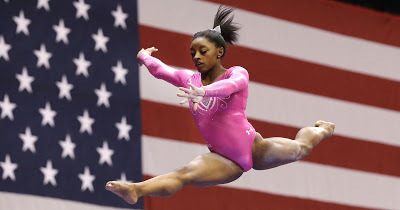
Early Life
Born on March 14, 1997, in Columbus, Ohio, African-American gymnast Simone Biles has emerged as a champion in her sport. She and her sister, Adria, were raised by their grandfather Ron and grandmother Nellie because of their mother’s substance abuse problem.
Ron and Nellie eventually officially adopted the two girls, and Biles calls her grandmother “Mom.” Nellie has been a constant source of support through Biles’s rise in the world of competitive athletics; as the gymnast told CNN, “She encourages me and never lets me feel down about something for too long.”
Biles discovered her abilities at an early age. According to the official USA Gymnastics website, she visited a gymnastics center on a field trip with her day care group, noting, “While there I imitated the other gymnasts, and Coach Ronnie noticed. The gym sent home a letter requesting that I join tumbling or gymnastics.” Very soon, Biles was on her way to developing those natural gifts.

Top U.S. Gymnast
Simone Biles began competing as a level 8 gymnast in 2007, and by 2011 she had cemented her standing at the junior elite level. That year, she took the top spot in the vault and balance beam events and finished third in the all-around at the American Classic.
She followed with an impressive series of showings in 2012, winning the vault and the all-around events at the American Classic, the Alamo Classic, the Houston National Invitational and the Secret U.S. Classic.
Biles soon emerged as a force to be reckoned with at the senior elite level, bursting into the spotlight as the all-around winner at the 2013 U.S. P&G Championships. Also that year, she delivered a historic showing at the World Championships by becoming the first female African-American athlete to win gold in the all-around.
As she explained to The Hollywood Reporter, this impressive victory likely served as an example to other young gymnasts: "I think it inspires a lot of the little girls out there to go in the gym and train harder," she said.

Biles continued to build on her successes in 2014, again taking the U.S. and world titles in the all-around competition. She also won gold in the vault, floor exercise, balance beam and all-around at the Secret U.S. Classic that same year. During her floor routines, Biles often executed what has become her signature move: a double-flip with a half-twist.
In 2015, Biles became the first woman to win her third consecutive world all-around title, giving her a record 10 gold medals at the international competition. Considered one of the country’s top Olympic hopefuls, she then resumed training for Rio 2016 at World Champions Centre, which is owned by her family, in Spring, Texas.
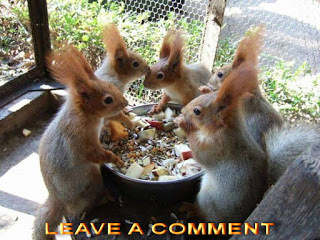
Clancy's comment: Wow. Go, Simone!
I'm ...
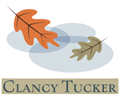
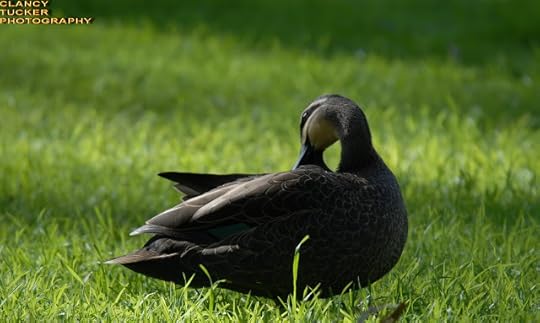
Published on September 17, 2016 16:07
September 15, 2016
16 September 2016 - SUSAN WINGATE - Guest Author

SUSAN WINGATE- Guest Author -
G'day folks,
Welcome to my interview with Susan Wingate - #1 Amazon Bestseller & Winner of the 2011 Forward National Literature Awards #author #novels #fiction #books #ebooks. For the writing of her award-winning, Amazon bestselling novels, Susan Wingate’s vast knowledge of the law comes from watching copious reruns of Law & Order, Law & Order: SVU, and Law & Order: Criminal Intent. So, if you need a little edification while reading novels, Susan Wingate’s novels should be your first choice. If you’re smart, that is.
Susan Wingate writes thrillers, fantasies, and women’s fiction–clean novels and short stories with mythical lands, and fantasies with mystery and thriller elements.
Welcome, Susan ...
1. TELL US A LITTLE ABOUT YOURSELF AND YOUR WRITING JOURNEY.My writing journey has been a little all over the place. My dad was a writer and radio personality before he became a partner with a pizza chain in Phoenix, Arizona where I was born. That was around 1968 when he went in to the pizza business. We got a lot of free pizza back then. I loved that. But my writing, or shall I say, my desire to start writing didn’t take hold until I was seventeen and went on tour with a small acting troupe called the Robin Hood Players out of Scottsdale. I wrote a lot of poetry back then, songs too.
Then, life got in the way. When I returned from the tour, I started dating the man who I would end up with for the next twenty-four years of my life. He didn’t like the acting life and encouraged me to stop. After that, I was a receptionist, waitress, bartender, aerobics instructor, and finally, a bookkeeper. It was around the time I started working in an office that I decided to return to school and get a degree in accounting. From around the age of twenty-two, I worked as a bookkeeper and accountant until shortly after my dad died in 1996. Dad dying took the wind out of my sails and everything changed. I couldn’t stand living in Phoenix any longer and bolted. I landed on a cooler island in the Pacific Northwest off the coast of Washington State. That’s where I live today. I write full-time and live with my husband, Bob, a man who encourages my creativity.
2. WHEN AND HOW DID YOU BECOME A WRITER?It was on my journey to my new life on the island that a story began forming—a mystery which later became my first novel entitle OF THE LAW. But it wasn’t a quick writing of that first novel. In fact, it took me eight years to finish. I wrote in stops and starts. Then, one day I decided to go to a writer’s conference with a girlfriend who was also interested in writing. It was at the conference where I met Michael Collins, an international bestselling author. He was conducting a workshop and asked for submissions that he could discuss with each of the workshop participants. During our one-on-one discussion, he told me he would mentor me if I was at all interested. Wow! If I was interested! Of course I was interested. His mentorship lasted two years during which he helped me complete my first novel. That was 2008.
After that, as they say, the rest is history. Since then, I’ve written twelve books—fiction and nonfiction. I’ve just finished my thirteenth novel—an apocalyptic thriller. I will be sending that off to the editor in a couple of weeks. But I’ve been writing two other novels and a memoir concurrently.
3. WHAT TYPE OF PREPARATION DO YOU DO FOR A MANUSCRIPT? DO YOU PLAN EVERYTHING FIRST OR JUST SHOOT FROM THE HIP?When I was first starting out, first writing novels, it was like I needed a paint-by-numbers kit to keep my head straight on what I was thinking about, such as what was my purpose of writing the story (as the author), who would care, but also I needed to know exactly how the characters were going to act, what trouble they would get into and, eventually, out of.
Nowadays, I write mainly from conceptualizing. Sometimes I will chart out a story arc but mostly, my writing is from the hip. I understand what the inherent problems are, what the external challenges will be, how my character will succeed (and sometimes fail), and what my readers will learn from the story.
What used to be an overly-exaggerated outline that could go on for twenty pages, has become more of a 5-step, one-page discussion of the story’s progress. It’s much more freeing although I must say that the writing of each novel has slowed down because of the abundance of pre-decided information written in the outline. The outline was like a very thin novel with little transitional qualities and more statements of what happens here, there and to whom.
I can talk for hours on this subject—formatting and structure. So, I think I’d best stop there.

4. WHAT DO YOU ENJOY MOST ABOUT BEING A WRITER?The story. Living in the story, developing it in my mind. I love being alone with my characters and understanding their goals, their hearts, their dreams, their troubles. I want to help them get out of trouble but before I do, I let them know that bad things will happen and it’s going to get really bad for them. But they forget, because they’re busy with whatever is happening at the moment and then, Boom! Something horrific occurs and it surprises everyone. Even me.
I love creating the story, the characters, the trouble, the moral of the story, the outcome. I love pitting my characters against their worst nightmares and then seeing what they do, how they act. Maybe I’m thinking a little of what I would do in a similar situation. Would I be heroic? Or would I quail under my trouble? We never know, do we?
5. WHAT IS THE HARDEST THING ABOUT BEING A WRITER?Interruptions. Only thirteen months ago, I wrote alone in my house on the couch with the only interruptions from an occasional dog wanting out or a cat nudging my arm. But, last June 2015, my mother had to come live with us. She has Alzheimer’s, Chronic Obstructive Pulmonary Disease, and schizophrenia. She was doing well on her own and needed help. My work schedule has changed dramatically. I have always gotten up early—between five and six in the morning—but, before, I’d always had the luxury of lolly-gagging into work rather than, now, jumping right into work and writing.
But I must because my mom needs her first treatment by 8:30 a.m. and every half-hour to hour after that. My writing feels like a series of epileptic fits. Where, before, I could write all day long and into the night if I wanted.
We do what we must to write. So, I rise early, jump in to the story, and pop in and out throughout the entire day. Everything changes. Nothing will stop me from writing, even if for only fifteen minutes.
6. WHAT IS YOUR GREATEST WRITING ACHIEVEMENT?I think my greatest achievement is that I write every day, no matter what. There’s a certain victory to making oneself sit down and create, whether in writing or another art. You don’t always feel like writing. Sometimes you feel like painting your toenails or cleaning the toilet but you must fight those urges. Those urges are simply distractions because something is happening in your subconscious that is telling your brain, this is wrong with the story, or the character acted in a way that is out of character or you have a timeline wonked up. So, the achievement comes when you sit your butt down and fix it, figure it out, when you stop whining and scrubbing the john.
I mean, I can give you a list of literary achievements, of awards, of bestsellers statuses but that’s all on my website. That’s the boring stuff.
For me, the exciting stuff is that I’m writing. What a blessing, an honour, that people are reading my work! It’s a huge responsibility.
7. WHAT ARE YOU WORKING ON AT THE MOMENT?I’m currently writing three things: 1) A superhero-esque tale of a woman whose daughter has just died, 2) A fantasy about a girl with a unique gift of sight, and 3) A memoir about my mother called The Dementia Chronicles, of which I’m blogging about as well.
8. WHAT INSPIRES YOU?Absolutely everything. A word spoken or read, the Bible, the woods out in our field, my pets, the deer who take up residence around our property, people who speed in their cars, Church, the parishioners… I mean, you name it, it has the potential to spark the idea of a story.
9. WHAT GENRE DO YOU WRITE?I write across genres but it seems that all of my writing holds some element of mystery, fantasy, faith. I write thrillers that can be classified as women’s fiction and fantasy that can be classified as thrillers. I think I’ve found my comfort level in writing mash-ups like this.
For instance, THE DEER EFFECT has been classified as psychological suspense, fantasy, thriller, Christian fantasy, religious fiction, and inspirational fiction.
My apocalyptic thriller will definitely be faith-based and probably Christian fiction but the core of the storytelling is the thriller. It will most likely be categorized as young adult and possibly, fantasy.
I think I might feel corralled if I were to only write strictly romance, mystery, or the western. I know I would stray into other genres.

10. DO YOU HAVE ANY TIPS FOR NEW WRITERS?Keep reading books in the genre you hope to write in. Keep writing and try to every single day. Keep learning—reading how-to books and going to writing conferences. Just don’t stop. If writing is your dream, don’t stop writing.
11. DO YOU SUFFER FROM WRITER’S BLOCK?Nah. If I have a pause in a story, I just write something else—poetry, another fiction piece, memoir. Because these pauses are simply our subconscious trying to figure something out. When you get more creative, the subconscious can speak to your conscious brain and tell you what to do.
No. I can even say that I hate the term writer’s block. It’s a cop out to allow yourself to stop writing. It’s weak.
12. DO YOU HAVE A PREFERRED WRITING SCHEDULE?I love to write in the mornings. My relaxed brain can easily put together things in story that my afternoon brain will say, I wish you allowed me to have writer’s block. LOL. Mornings are my most creative times. Mornings are when the light is breaking into gradient fractals, atoms are splitting as the sun cranes its face over the horizon, birds sing, the deer show up for grain, coffee permeates the air and the dogs are still sleepy. Mornings are quiet and enormous spaces where words fly out of me. Mornings rock.
13. DO YOU HAVE A FAVOURITE WRITING PLACE?On the couch! I even named my newsletter about my favourite writing spot, it’s called (wait for it…) Writing from the Couch with Susan Wingate. Isn’t that a hoot? I write here, as I am right now, feet up, fingers tapping.
14. WHO IS YOUR FAVOURITE AUTHOR AND WHY?Probably, the Apostle Paul. He wrote in the utmost worst conditions and he continued to write in order to tell his story until they killed him. And, Kurt Vonnegut. I was actually finishing the reading of his book, A Man Without a Country, the night he died. It sort of struck me.
15. WHAT’S THE GREATEST COMPLIMENT YOU EVER RECEIVED FROM A READER?Every compliment is the greatest. When a reader is touched by one of my stories, the reason is always extremely personal to that reader. You never know why you touch someone or for what reason so you must assume that particular reader’s reason has been borne out of experience. If you give that some thought, what a powerful emotion the reader must feel and, wow, by one of my stories. Every compliment is the greatest.
16. WHAT WAS THE WORST COMMENT FROM A READER?LOL. This is easy. It was for my award-winner Bobby’s Diner. The reviewer wrote on an Amazon post, “Diner dive.” I still chuckle. I mean, does it hurt? Not that much. It amuses me more.
17. WRITERS ARE SOMETIMES INFLUENCED BY THINGS THAT HAPPEN IN THEIR OWN LIVES. ARE YOU?Of course! You’d have to live in a vacuum not to be influenced by everything that goes on around you and in your life.
18. OTHER THAN WRITING, WHAT ELSE DO YOU LOVE?God, my family, my pets, nature, the Earth, the moon and the stars.

19. DID YOU HAVE YOUR BOOK / BOOKS PROFESSIONALLY EDITED BEFORE PUBLICATION?I used to not but now I do. I have for a while. The difference between a professionally-edited manuscript and one that is not, is like night and day. Plus, you learn so much when you apply the edits of a pro. I love having my worked edited but I also want to say that some editors are specific genre editors. For instance, some editors excel editing thrillers and others, mainstream fiction. So, you really need to shop your editor for your specific genre.
20. DESCRIBE YOUR PERFECT DAY.It’s morning. I’m sitting with Robert, my dog and coffee is cooking on the counter. My feet are up and I’m remembering the dream I just left in bed. I get my coffee, kick up my feet, hand-write to my journal. Then, I pop open my computer and cram out a couple of poems. After that, I write—nonstop—for hours. Then, Bob comes home and we take the dogs for a walk. Then we go for a power walk alone. We guzzle a quart of water in the car, come home and play cribbage until dinner time. We make dinner together—something easy but with gourmet flare—buttered onions with agave nectar sautéing in the pan, a filet of salmon and drop in fresh mandarin orange, drizzle with more butter and spritz with Veuve Cliquot champagne, the rosé. Grill some corn on the cob with black pepper and more butter and throw together a fresh salad with butter lettuce, strawberries, and yellow heirloom tomatoes. Dash some white balsamic vinegar over it and, Voila! Dinner. More cribbage and talk about the day, hugs, kisses and off to bed.
21. IF YOU WERE STUCK ON A DESERT ISLAND WITH ONE PERSON, WHO WOULD IT BE? WHY?Bob. He’s my heart.
22. WHAT WOULD YOU SAY IF YOU HAD THE CHANCE TO SPEAK TO WORLD LEADERS?Please stop making people suffer from your choices.
23. WHAT ARE YOUR PLANS FOR THE FUTURE?To keep on keepin’ on! To write, to live, to love.
24. WHAT ARE YOUR VIEWS ON BOOK TRAILERS? DO THEY SELL BOOKS?Book trailers are a hoot. I think they’re more for the author though. It’s fun to watch them. Not sure if they produce many more sales than if you don’t have one. Trailers work well for movies. For books? I’m not so sure.
25. DO YOU SEE YOURSELF IN ANY OF YOUR CHARACTERS?I see myself in all of my characters—good and bad. We’re all a yin and yang of personalities. We work hard (or at least I hope we do) to suppress the bad traits. But we are everyman—everyman is in us.
26. DOES THE PUBLISHING INDUSTRY FRUSTRATE YOU?No. I think the publishing industry is one of the longest surviving industries around and they are because they know what they’re doing. They are a well-oiled machine that understands its market and works hard to create a supply for the demand.
Publishing is big business. It should be treated as such.
27. DID YOU EVER THINK OF QUITTING?You know, when things get tough, the thought sometimes crosses my mind but then, what else would I do—go into banking? I’m nothing but a writer and so I let the worries and woes wash over and off and then start all over again.
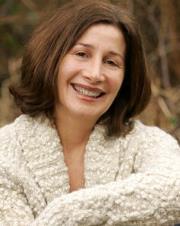
28. WHAT WAS YOUR FAVOURITE MANUSCRIPT TO WRITE? WHY?This is a hard one! All the manuscripts are so different. Hmm… Okay. I guess I would have to say the one I’m writing now—the one about the girl with a special gift of sight. Although, I must say, I had a great time writing TROUBLED IN PARADISE and also THE DEER EFFECT.
Troubled in Paradise was my first go at tween-YA fiction. It’s a real voice-y little story. My husband, Bob was happy when I finished that one because for months I was in “the skin” of Susie Speider, acting like a fifteen year old, having trouble in high school.
The Deer Effect was a triumph for me across genres. It blends fantasy, mystery, psychological thriller, and inspiration all in one story. I had no idea if people would accept it but after the literary world gave it four awards in 2015, people began to read it and from their responses, I think they’ve enjoyed that tale.
29. HOW WOULD YOU DEFINE ‘SUCCESS’ AS A WRITER? To me, success as a writer means you love what you are doing—that you are writing. Selling as a writer means you are making money doing what you love. No more. No less.
30. WHAT SHOULD READERS WALK AWAY FROM YOUR BOOKS KNOWING? HOW SHOULD THEY FEEL?That a little piece of me is in every story. That through my books, I hope they can learn to forgive people for being human. That readers will turn their hearts from hate and, instead, react first in love. That I’ve put my heart and soul into every character, every sentence, and every word.
31. WOULD YOU LIKE TO HAVE YOUR BOOKS MADE INTO MOVIES? EVER WRITTEN A SCREENPLAY?I’ve written a screenplay. I would love to see any of my books made into a movie, possibly The Deer Effect mostly. But a colleague of mine is a movie scout and wants to look at my latest completed novel, the apocalyptic thriller. So, we’ll see!
32. HOW MUCH THOUGHT GOES INTO DESIGNING A BOOK COVER?I think there must be a bunch of thought by the designer who makes book covers. They have to understand the tropes of each genre and expectations of the readers of those genres. It’s way beyond my expertise but I am always in awe of book covers and designers of book covers.
33. WHAT’S YOUR ULTIMATE DREAM?Oh, I’m not telling you that! The concealment of one’s’ dream is crucial to having the dream come true.
But, really, just to live a happy and fulfilling life with lots of books to read and lots of paper and white space to write upon.
34. WRITING IS ONE THING. WHAT ABOUT MARKETING YOU, YOU’RE BOOKS AND YOUR BRAND? ANY THOUGHTS?It’s hideous, extra, difficult work that must be done these days.
35. ARE YOUR BOOKS SELF-PUBLISHED?Some are and some are traditionally-published. In this regard, I’m what they call a hybrid author.

36. DESCRIBE YOURSELF IN FIVE WORDS.Focused. Intelligent. Empathetic. Observant. Caring.
37. WHAT PISSES YOU OFF MOST?Politicians. Hands down.
38. WHAT IS THE TITLE OF THE LAST BOOK YOU READ? GOOD ONE?“Help. Thanks. Wow.” by Anne Lamott. Awesome book.
39. WHAT WOULD BE THE VERY LAST SENTENCE YOU’D WRITE?Besides, The End? She lived well and far too long.
40. WHAT WOULD MAKE YOU HAPPIER THAN YOU ARE NOW? CARE TO SHARE?That my dog, Robert—my dog child—outlive me. A piece of my heart will shatter when he goes. I featured his little white dog butt in The Deer Effect. I love him. He’s my baby. God. Did I just write all of that? What a sap, right?
41. ANYTHING YOU’D LIKE TO ADD?Thank you so much for featuring me! You’re the bomb! What a wonderful opportunity to share with your readers. I appreciate it, Clancy.

AMAZON
WEBSITE
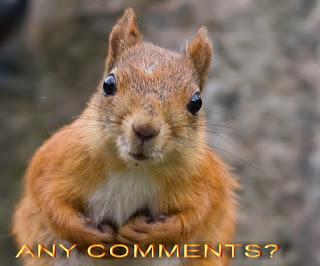
Clancy's comment: Thank you, Susan. I'm with you on your answer to question 37. Many thanks for asking me to be a guest on your blog.
I'm ...
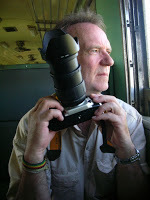

Published on September 15, 2016 16:09
September 13, 2016
14 September 2016 - GREAT QUOTES
GREAT QUOTES
G'day folks,
Time for some more great quotes to inspire you and get you started for the day.


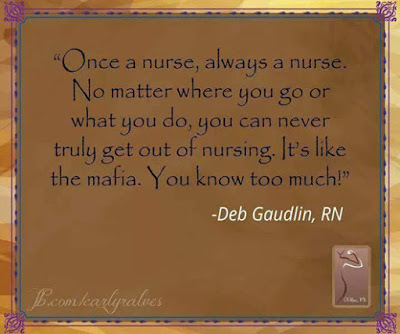



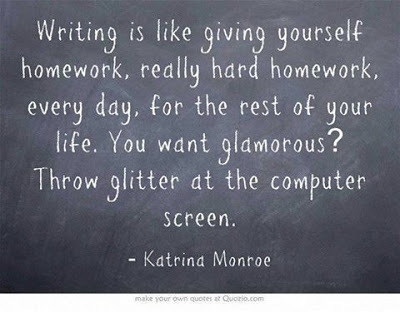






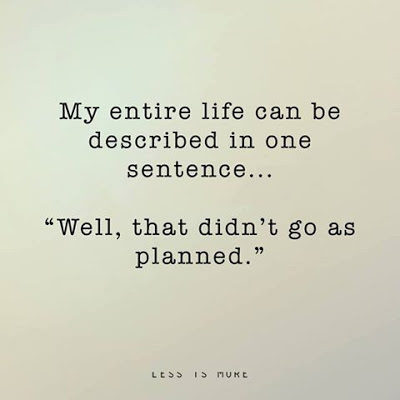




Clancy's comment: Loved the black sheep.
I'm ...
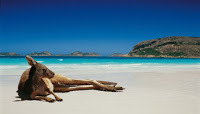
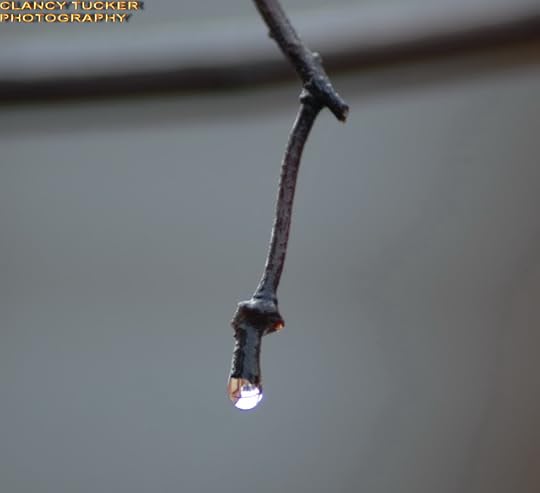
Published on September 13, 2016 14:58
September 12, 2016
13 September 2016 - TORNADOES

TORNADOES
G'day folks,
Many of my American friends will relate to this post. So, what is a tornado? A tornado is a violently rotating column of air that rotates while in contact with both the surface of the Earth and a cumulonimbus cloud or, in rare cases, the base of a cumulus cloud.
Although tornadoes can happen at any time of year, they are especially common during the spring and early summer. May and June are the peak months in terms of numbers of tornadoes, but April appears to be the deadliest month. Two of the all-time worst tornado disasters occurred in April. On April 3-4, 1974, 148 twisters struck 13 states, causing more than 300 deaths, and on April 27, 2011, 137 reported tornadoes swept through the south, killing nearly 300 people in six states. Most of the fatalities occurred in Alabama. May holds the record for experiencing the most tornadoes. In May 2003, there were 543 recorded tornadoes. On average, 60 people die each year as a result of tornadoes, mostly from flying and falling debris.

What Is a Tornado?
A tornado is a dark funnel-shaped cloud made up of violently rotating winds that can reach speeds of up to 300 m.p.h. The diameter of a tornado can vary between a few feet and a mile, and its track can extend from less than a mile to several hundred miles. Tornadoes generally travel in a northeast direction (depending on the prevailing winds) at speeds ranging from 20-60 m.p.h.
What Causes a Tornado? Tornadoes are most often spawned by giant thunderstorms known as "supercells." These powerful, highly organized storms form when warm, moist air along the ground rushes upward, meeting cooler, drier air. As the rising warm air cools, the moisture it carries condenses, forming a massive thundercloud, sometimes growing to as much as 50,000 ft. in height. Variable winds at different levels of the atmosphere feed the updraft and cause the formation of the tornado's characteristic funnel shape.

Where Do Tornadoes Occur? The conditions that lead to the formation of tornadoes are most often met in the central and southern U.S., where warm, humid air from the Gulf of Mexico collides with cool, dry air from the Rockies and Canada. This area, dubbed "tornado alley," extends roughly from the Rocky Mountains to the Appalachians, and from Iowa and Nebraska to the Gulf of Mexico. Tornadoes can also occur elsewhere, though, including all U.S. states, Europe, Asia, and Australia.

What Kind of Destruction Do Tornadoes Cause?
The Fujita scale classifies tornadoes according to the damage they cause. Almost half of all tornadoes fall into the F1 or "moderate damage" category. These tornadoes reach speeds of 73-112 m.p.h. and can overturn automobiles and mobile homes, rip off the roofs of houses, and uproot trees. Only about 1 percent of tornadoes are classified as F5, causing "incredible damage." With wind speeds in excess of 261 m.p.h., these tornadoes are capable of lifting houses off their foundations and hurling them considerable distances.
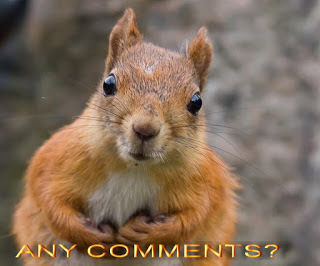
Clancy's comment: It sounds crazy, but I'd love to be up close and personal so I could take some good photographs.
I'm ...


Published on September 12, 2016 14:17
September 11, 2016
12 September 2016 - MORE WEIRD STUFF

MORE WEIRD STUFF
G'day folks,
Brace yourself for some more weird stuff.
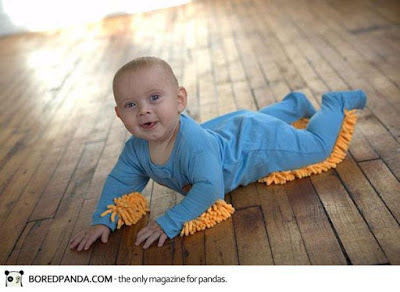
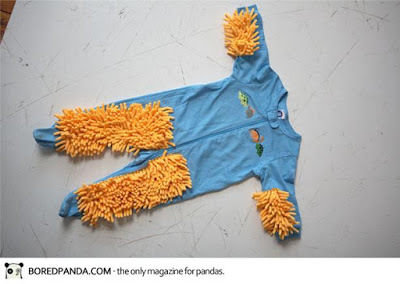
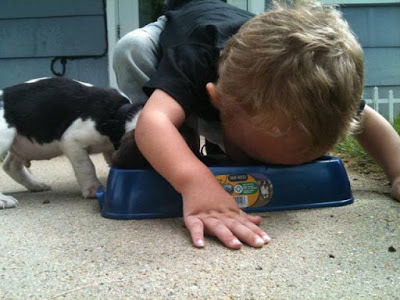

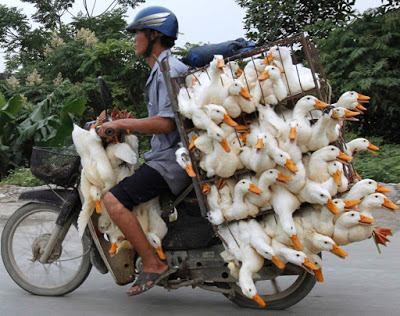

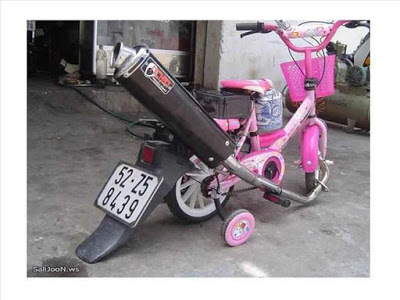





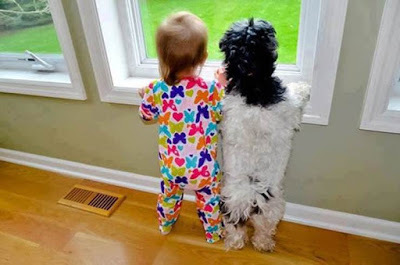


Clancy's comment: Don't ya just love these?
[image error]
I am always happy to promote writers groups, and not only in Australia. The Fairfield Writers in Queensland, Australia, are about to release another anthology, and all are welcome to attend the launch.
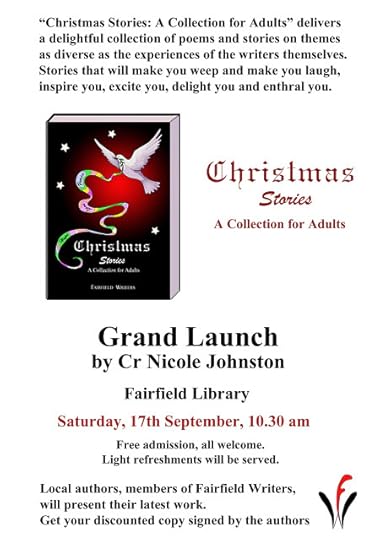

Available via Booktopia and Angus and Robertson online, and RRP is $15.00.
I'm ...

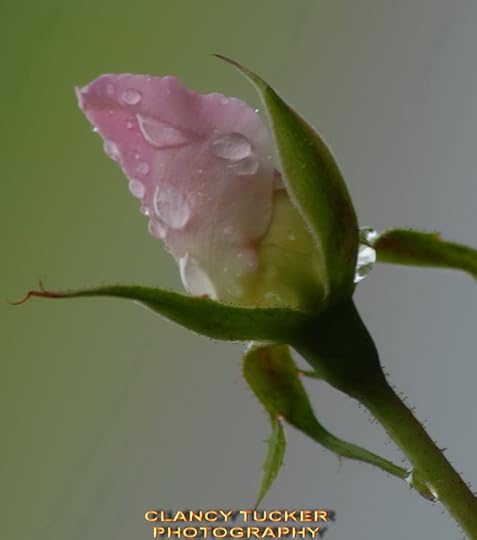
Published on September 11, 2016 15:30
September 10, 2016
11 September 2016 - FAMOUS LAST WORDS
FAMOUS LAST WORDS
G'day folks,
Life is a struggle, and so is death for some people. The last thing anyone wants to do on his dying bed is to regret a life already spent and to exit the earth without saying a notable word. Most people on their dying beds mutter one or two things before they take their final breath and these words are said spontaneously. Death does not give anyone time to gather the best last words to say but there are several of these words by famous people that appear poetic, and scripted – some of the words are funny and others motivating.
Death came to these historical figures listed here, in their bed, on the battle field or somewhere they didn’t expect it to come, but they were able to say something distinct that is worth including in this list of best Last Words Spoken By World Famous People At Death.
1. Louis XIV – King of France“Why do you weep. Did you think I was immortal?”
2. Errol Flynn – Actor“I’ve had a hell of a lot of fun and I’ve enjoyed every minute of it.”
3. Humphrey Bogart – Actor“I should never have switched from Scotch to Martinis.”
4. Winston Churchill – Statesman“I’m bored with it all.”
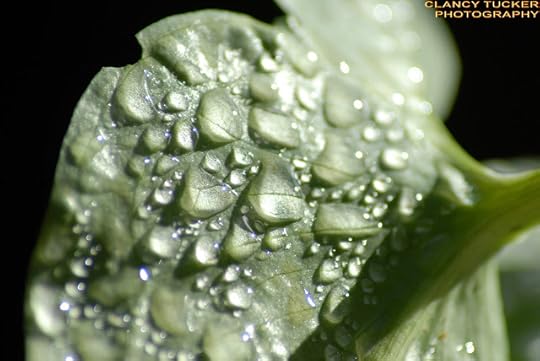
5. Jesus Christ – Savior of the world“Father, into thy hands I commend my spirit.”
6. Lou Costello – Comedian“That was the best ice-cream soda I ever tasted.”
7. Karl Marx – Revolutionary“Go on, get out – last words are for fools who haven’t said enough.”
8. Eugene O’Neill – Writer“I knew it. I knew it. Born in a hotel room – and God damn it – died in a hotel room.”
9. James K. Polk – US President“I love you Sarah. For all eternity, I love you.”
10. Amelia Earhart – Last radio communiqué before her disappearance.“Please know that I am quite aware of the hazards. Women must try to do things as men have tried. When they fail, their failure must be but a challenge to others.”

11. Voltaire – Philosopher“Now, now, my good man, this is not time for making enemies.”
12. Anna Pavlova – Ballerina“Get my swan costume ready.”
13. Lady Nancy Astor“Am I dying or is this my birthday?”
14. Edmund Gwenn – Actor“Yes, it’s tough, but not as tough as doing comedy.”
15. Leonardo da Vinci – Artist“I have offended God and mankind because my work didn’t reach the quality it should have.”
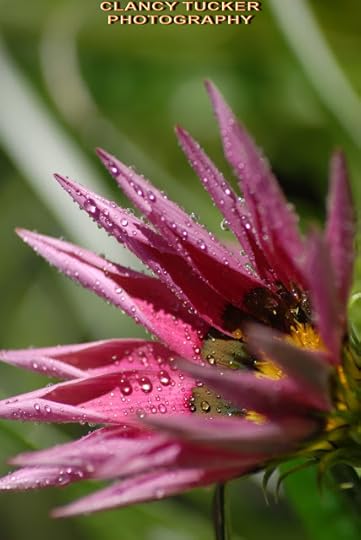
16. Oscar Wilde – Writer“Either that wallpaper goes, or I do.”
17. Pancho Villa – Mexican revolutionary“Don’t let it end like this. Tell them I said something.”
18. O. Henry (William Sidney Porter) – Writer“Turn up the lights, I don’t want to go home in the dark.”
19. General John Sedgewick – Union Commander“They couldn’t hit an elephant at this dist…”
20. Henry Ward Beecher – Evangelist“Now comes the mystery!”

Clancy's comment: So, what would be your last words?
I'm ...

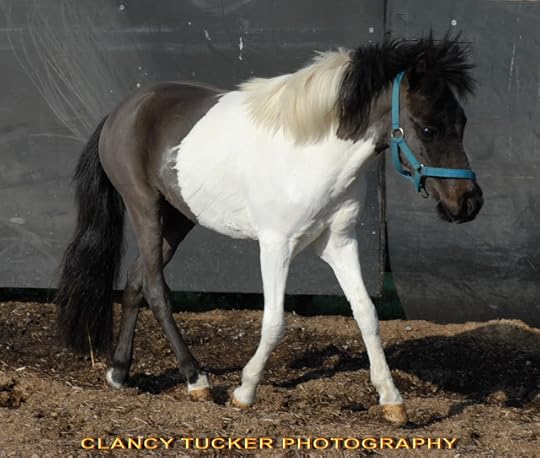
Published on September 10, 2016 16:02
September 9, 2016
29 September 2016 - HELGA PARL - NOVELIST AND SHORT STORY WRITER

HELGA PARL- NOVELIST AND SHORT STORY WRITER -
G'day folks,
Here is a great story about one of the many fabulous migrants who made their home in Australia.
Helga was born during the height of the Great Depression, in a city in East Germany, not far from Berlin. Her childhood memories are punctuated by having to run almost nightly into bomb shelters, hunger and cold. Yet she managed to keep a sunny disposition, enjoying little things. Like a flower at the edge of the footpath, or a pretty piece of glass that caught the sunlight.
After high school, apprenticeship and study of engineering, she took a job in a city at the Baltic Sea in a factory that produced massive ship’s diesel engines.
It was a dream job any young person would grab with both hands. Although her knowledge of engineering was essential, her artistic leanings were also important to enable her to fulfil her many tasks. Part of her job was the production of marketing material and to accompany the big machinery to be exhibited at international fairs. Through her job, she met her future husband. Trouble was, he lived in Holland, ‘the forbidden West’.
Authorities refused to issue a permit for her to accompany him to his home land. But being young and in love and full of hope, she was afraid of nothing. On a gloomy Easter day, when it was raining ‘cats and dogs’ the couple succeeded to escape.
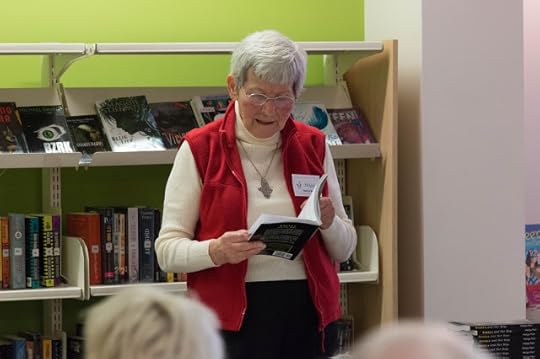
During her studies of the strange Dutch language, she found a job as a draftswoman. Getting ahead economically, proved to be impossible. The hope of a bright future in the Netherlands seemed for ever receding.
In the late fifties, Australia was the ‘promised land’. Its government invited skilled European migrants to help Australia catching up with other, well advanced countries. By doing so, migrants had the opportunities to build a better life for themselves. Thousands answered that call. The young couple chose to be part of them.
After a six-week’s sea voyage, in a former troop carrier, they reached their destination: Brisbane.
It was 1960 when Helga arrived in Brisbane. She felt as if she had stepped into a double helix time warp.
Living standards seemed fifty years ahead of the one she had left behind, when leaving East Germany. There, she hadn’t ever touched a refrigerator. Yet here, in Brisbane, even the humblest home could boast of one. Many people considered a washing machine an essential item and most houses had a telephone installed. Here many people owned or paid off a car, even if only a used one. In her country, she had been one of the lucky exceptions, owning a little motorbike. Cars were luxury articles few could hold of, even if they had the money to afford them.
But the social fabric seemed to her totally out of date. Though women were treated as ladies; in the male dominated society, they rated only as second class citizens. A single woman couldn’t buy a house in her own name, unless of course she had loads of money.
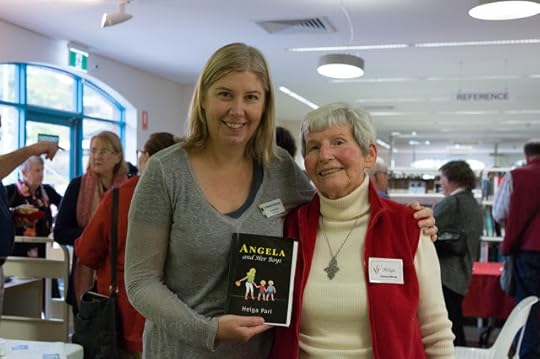
Liquor laws prevented women to join their husbands in pubs. The newcomer was amazed to see them in their husband’s cars in front of a pub, patiently waiting for the shandy their mates would bring to them after they had downed a few glasses of beer.
As soon as she possibly could, Helga applied for a job as a draftswoman. She was sent to a Brisbane shipyard, but could not even get to their site office. A board on the entrance proclaimed with big letters ‘Women, children and dogs not allowed on these premises’! She was sent away, albeit with apologies and a slip of paper with the head office address in the city.
There, she landed her first job. In her letter to her parents she described the place as ‘Dickensian’. Free standing swivel drawing boards with fitted drawing machines, which were standard since the thirties in Germany and Holland, where she had worked previously, seemed to be unheard of. Here, for forty eight hours a week, she and her colleagues had to bend over boards, which were placed on long tables. T- and set squares were used instead of finely tuned drawing machines. The paper was pinned with drawing pins to the board. During the heat of day the paper increased in size, at night it shrank and consequently, the pinholes became hideous wounds.
Draftsmen wore long black trousers, long sleeved white shirts, black ties and little black aprons; even at temperatures of 100 degrees Fahrenheit. Fans could not be used, because they would blow away reference drawings. Droplets of sweat from face and hands would mingle with dust and graphite, creating dirty looking drawings.
When rats made their nests in chewed up drawings and blue prints, they were poisoned. As they died under the old timber floor boards, employees had to breathe in the foul air from their rotting corpses.
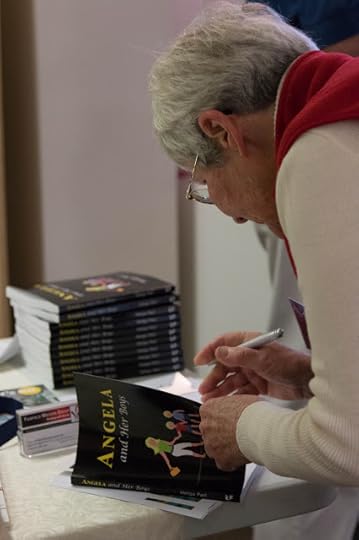
But Helga was a determined woman and realised that she was the lucky one. Although she would only earn eighty per cent of the wages of her male counterparts, she earned more than other women in so-called women’s jobs with similar long hours and responsibilities. She knew that Storey Bridge had been designed under similar conditions. So she could design plans for the ship building industry that was still thriving.
Of course eventually Australia caught up to the best international standards. The metric system was introduced. Dollars and cents replaced pounds shillings and pence. Computers made even the newest drawing equipment obsolete. Helga continued to work in the industry for 40 years, and saw all these changes and many more.

After the hated Berlin wall and the border between East and West Germany had collapsed, Helga took the opportunity to re-visit her home town. She was astonished how little the city and its people had changed during her long absence. Blaming the ‘Cold War’ for having lost contact with the friends of her youth, she scanned in vain the crowds for recognisable faces.
A year later, one computer savvy woman of her former group of friends, managed to track her down.
“Australia, that’s down under, at the end of the world!” cried the others. Helga will never come that far for a reunion.”
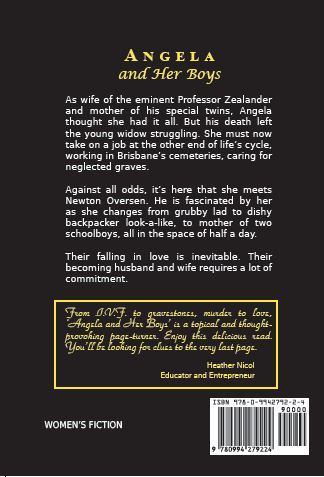
Try to keep her away! The reunion was a great joy for everyone. It was followed by several other reunions, with Helga making the ever increasingly hazardous overseas trip.
For well over half a century, Helga has been settled in the Brisbane suburb of Yeronga. She has adjusted to a new country - a new continent on the other side of the globe to her homeland - and has mastered a third language.
In retirement, the former German girl, then Dutch wife, is now a contented Australian mother and grandmother. She is using her own computer, working, as much as she can, on books, calendars and greeting cards.
In her late seventies, she set out to prove her mastery of English was adequate to enable her to become an author. She wrote a novella, and then joined Fairfield Writers to develop her skills, working hard to improve her writing and producing some excellent stories for their Anthologies.To celebrate her eightieth birthday, she published Pixels, a collection of her own short stories.

Shortly after publishing Pixels, a chance meeting with an interesting woman led to an idea for a novel, and she set out to write a uniquely topical story about a woman who worked in an IVF clinic, and underwent a procedure to produce IVF ''twins'', over a year apart in age.
Helga recently successfully launched her novel, Angela and Her Boys, in a gala event at Fairfield Library. She is now happily marketing her novel and delighting in very positive feedback from readers.
Helga has worked hard to demonstrate her mastery of English and of the skills required to be a novelist. ANGELA and Her Boys is the proof that she succeeded admirably in that endeavour.

Clancy's comment: Go, Helga! We are glad you came to the lucky country.
I'm ...


Published on September 09, 2016 14:48
September 8, 2016
9 September 2016 - HISTORY OF THE NOBEL PRIZE

HISTORY OF THE NOBEL PRIZE
G'day folks,
We have all heard of the Nobel Prizes, but what do we actually know about them? Alfred Bernhard Nobel was a Swedish chemist, engineer, innovator, and armaments manufacturer. Here is some background on his prizes.
Winning a Nobel Prize is a life-changing honor. Whether the laureate is an internationally known figure (such as Mother Teresa or Barack Obama, winners of the 1979 and 2009 Peace Prize, respectively) or a scientist plucked from obscurity (like Richard R. Ernst, who won the 1991 prize in chemistry for refinements in nuclear magnetic resonance spectroscopy), the award brings with it worldwide recognition that highlights one's life work and provides the funds to continue and further the mission. For academics and institutions, a Nobel Prize is used to attract the best and the brightest minds, whether students or scholars.
2015 Nobel Prizes
Peace
The National Dialogue Quartet (Tunisia) "for its decisive contribution to the building of a pluralistic democracy in Tunisia in the wake of the Jasmine Revolution of 2011." (See also: Past winners in Nobel Peace Prizes.)
Physiology or Medicine
One-half jointly to William C. Campbell (U.S.) and Satoshi Ōmura(Japan) for their discoveries concerning a therapy against infections caused by roundworm parasites, and one-half to Youyou Tu (China) for her discovery of a therapy against Malaria.(See also: Past winners in Physiology or Medicine Nobel Prizes.)
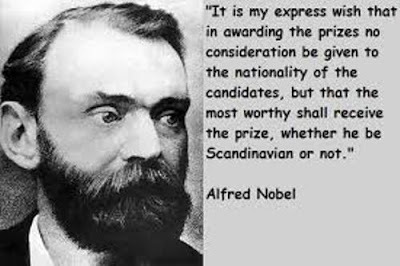
Physics
Jointly to Takaaki Kajita (Japan) and Arthur B. McDonald (Canada) "for the discovery of neutrino oscillations, which shows that neutrinos have mass." (See also: Past winners in Nobel Prizes in Physics.)
Chemistry
Jointly to Tomas Lindahl (UK), Paul Modrich (U.S.), and Aziz Sancar (U.S.) "for mechanistic studies of DNA repair".(See also: Past winners in Chemistry Nobel Prizes.)
Literature
Svetlana Alexievich (Belarus) "for her polyphonic writings, a monument to suffering and courage in our time" (See also: Past winners for Literature Nobel Prizes.)

Industrialist With a Conscience
Alfred B. Nobel (1833–1896), the Swedish chemist and engineer who invented dynamite, left $9 million in his will to establish the Nobel Prizes, which are awarded annually, without regard to nationality, in six areas (peace, literature, physics,chemistry, physiology or medicine, and economic science) "to those who, during the preceding year, shall have conferred the greatest benefit on mankind."
At first glance, it seems odd that the inventor of a powerful explosive would endow a group of awards that includes a peace prize. But Nobel was an industrialist with a conscience. He is credited with creating a controllable combustible that made blasting rock and the construction of canals and tunnels a relatively safe process. Nobel also contributed to the inventions of synthetic rubber, artificial silk, and synthetic leather. He held more than 350 patents. His interests were not limited to science. In fact, he was a lover of English literature and poetry and wrote several novels and poems. At his death, he left a library of more than 1,500 books, from fiction to philosophy.
Family Members Contest Last Wishes
Family members were shocked when they learned that Nobel had dictated that his fortune be used to establish the Nobel Prizes. They contested his will, but his final wishes were executed and the first awards were distributed in 1901, on the fifth anniversary of his death. The prize in economics, however, was established in 1968 by Riksbank, the Swedish bank, in honor of its 300th anniversary. Stockholm's Royal Swedish Academy of Sciences administers the award in physics and chemistry, the Royal Caroline Medical Institute awards the prize in physiology or medicine, and the Swedish Academy oversees the prize in literature. The Norwegian Storting, or parliament, awards the peace prize.
The Peace Prize
The first female Nobel Peace prize winner, Baroness Bertha von Suttner, in 1905, was perhaps the inspiration for the award itself. Von Suttner, who organized the Austrian Peace Society and wrote the landmark anti-war novel Lay Down Your Arms, was a close friend of Alfred Nobel. When he established the peace prize, he wrote that it should go "to the person who shall have done the most or the best work for fraternity between nations, for the abolition of standing armies and for the holding and promotion of peace congresses"—precisely the work the Baroness had been engaged in.
In 2014, Malala Yousafzai, the 17-year-old Pakistani activist who was shot by the Taliban in 2012 for promoting the education of women, shared the Nobel Peace Prize. She is the youngest recipient of a Nobel Prize.

The Prizes
Each winner of a Nobel Prize, which can go to individuals and institutions, takes home a medal, a diploma, and cash, which varies each year and depends on the income earned on the Nobel Foundation fund. In 2008, winners recipients receive 10 million Swedish kroners, or about $1.72 million.
The awards process begins an entire year before the awards are announced, with the administers of the awards inviting nominations from the fall through January 31 of the next year. On February 1, the six committees begin considering nominees and make recommendations to the prize-awarding subcommittees in September and early October. The winners must be announced by November 15. Nobel week begins in early October.
The Nobel Prizes are awarded on Dec. 10, the anniversary of Alfred Nobel's death. Posthumous nominations for the prizes are not allowed. This has sparked controversy, with critics saying that people who deserved a Nobel Prize did not receive one because they died before being nominated. In two cases the Prize has been awarded posthumously to people who were nominated when they were still alive. This was the case with UN Secretary General Dag Hammarskjöld (1961, Peace Prize) and Erik Axel Karlfeldt (1931, Literature)—both of whom were awarded the prize in the years they died. Since 1974, awards have not been allowed for a deceased person. William Vickrey (1996, Economics) died before he could receive the prize, but after it was announced.

Turning Down the Prize
Prizes are not automatically awarded each year. They can be withheld if there are no worthy candidates or when a world situation makes awarding the prizes impractical. Because of World War II, no awards were given from 1940–1942. Prizes can also be declined. Even if a prize is declined, the winner is entered in the books, but the cash gift reverts back to the fund. In 1937, Hitler issued a decree that forbade Germans from accepting Nobel Prizes. He considered pacifist journalist Carl von Ossietzky's 1935 peace prize a slap in the face. In 1973 Le Duc Tho refused the Nobel Peace Prize as he did not believe peace had been reached in Vietnam.

Clancy's comment: I'm still waiting to be nominated.
I'm ...

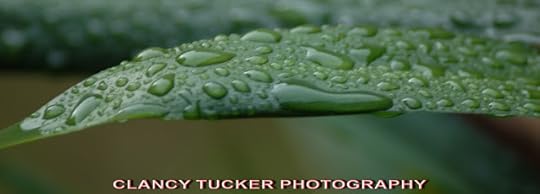
Published on September 08, 2016 14:56
September 7, 2016
8 September 2016 - MOVING PICTURES

MOVING PICTURES
G'day folks,
Time to view some more sensational moving pictures. Some will make you laugh.


[image error]
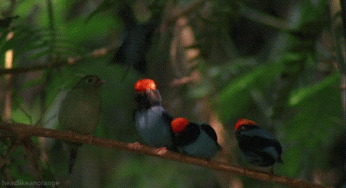



[image error]
[image error]
[image error]
[image error]
[image error]
[image error]
[image error]
[image error]


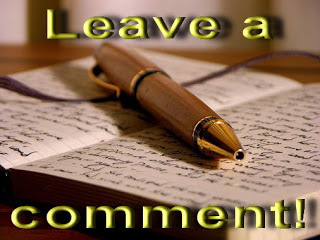
Clancy's comment: Love the cat ones.
I'm ...


Published on September 07, 2016 15:11



